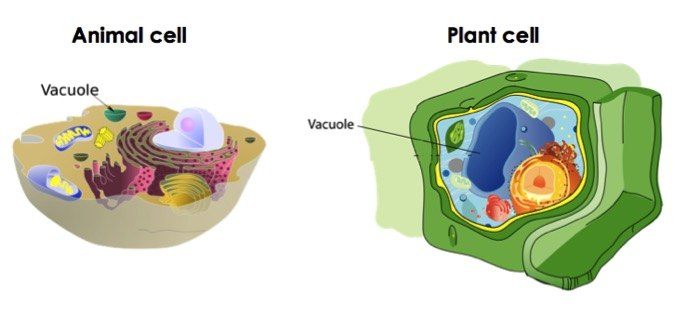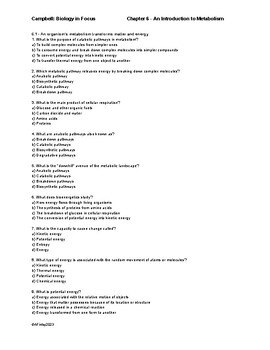The Vacuoles Function

The Multifaceted Role of Vacuoles in Cellular Biology
Vacuoles, often described as the cellular storage units, are dynamic and versatile organelles found predominantly in plant cells, fungi, and some protists, though they also exist in animal cells in a more rudimentary form. Far from being mere repositories, vacuoles play critical roles in maintaining cellular homeostasis, supporting growth, and facilitating responses to environmental stresses. Their functions span from waste management to structural support, making them indispensable components of eukaryotic cells.
Structural and Compositional Overview
Vacuoles are membrane-bound organelles filled with aqueous solutions known as cell sap, which contains water, enzymes, ions, and various metabolites. In plant cells, the central vacuole can occupy up to 90% of the cell volume, contributing significantly to cell turgor pressure—a key factor in plant rigidity and growth. The vacuolar membrane, or tonoplast, acts as a selective barrier, regulating the movement of substances in and out of the vacuole through specialized transport proteins.
Core Functions of Vacuoles
1. Storage and Waste Management
One of the most well-known functions of vacuoles is their role in storing nutrients, water, and waste products. In plants, vacuoles store sugars, amino acids, and secondary metabolites, such as pigments and toxins, which can deter herbivores. For instance, the bitter taste of quinine in cinchona trees is due to alkaloids stored in vacuoles. Similarly, vacuoles sequester waste products like nitrogenous compounds, preventing them from accumulating in the cytoplasm and disrupting cellular processes.
2. Osmoregulation and Turgor Pressure
Vacuoles are essential for osmoregulation, the process of maintaining water balance within cells. By actively pumping ions into the vacuole, the cell creates an osmotic gradient that drives water influx, increasing turgor pressure. This pressure is critical for plant cell rigidity, enabling plants to maintain their structure without a skeletal system. Turgor pressure also drives cell expansion during growth, as seen in the elongation of plant stems and roots.
3. Detoxification and Defense
Vacuoles serve as cellular detoxifiers, sequestering harmful substances such as heavy metals, excess salts, and reactive oxygen species (ROS). For example, plants exposed to high levels of cadmium or arsenic accumulate these toxins in vacuoles, minimizing their cytotoxic effects. Additionally, vacuoles store defensive compounds like proteases and antimicrobial peptides, which can be rapidly deployed in response to pathogen invasion.
4. pH Regulation and Enzymatic Activity
The vacuole’s acidic interior, maintained by proton pumps in the tonoplast, provides an optimal environment for hydrolytic enzymes such as proteases, lipases, and nucleases. These enzymes degrade macromolecules into reusable components, facilitating nutrient recycling during seed germination or senescence. The acidic pH also aids in the breakdown of foreign materials, such as pathogens, making vacuoles integral to plant immunity.
5. Structural Support and Cell Signaling
In plant cells, the central vacuole’s turgor pressure provides mechanical support, akin to a hydrostatic skeleton. This pressure is finely tuned by the tonoplast’s ion channels and transporters, which respond to environmental cues. For instance, during drought, vacuoles release stored water to maintain turgor, while in darkness, they may shrink, causing leaves to droop. Recent studies also suggest that vacuoles participate in cell signaling pathways, modulating responses to light, gravity, and stress.
Comparative Analysis: Vacuoles Across Species
While plant vacuoles are large and multifunctional, those in fungi and animal cells are smaller and specialized. Fungal vacuoles, for example, play a pivotal role in maintaining cell volume and pH, as well as storing polyphosphate reserves for energy metabolism. In animal cells, vacuoles are less prominent but still perform critical functions, such as lysosomal digestion in macrophages, where they fuse with phagosomes to degrade engulfed pathogens.
| Organism | Vacuole Size | Primary Functions |
|---|---|---|
| Plants | Large (up to 90% of cell volume) | Storage, turgor regulation, detoxification |
| Fungi | Medium | Osmoregulation, pH control, polyphosphate storage |
| Animals | Small | Lysosomal digestion, waste management |

Historical Evolution and Adaptive Significance
The evolution of vacuoles likely coincided with the transition from prokaryotic to eukaryotic life, as cells developed specialized compartments to manage increasing metabolic complexity. In plants, the expansion of vacuoles into large central organelles is thought to have been an adaptation to terrestrial environments, enabling efficient water storage and structural support. This evolutionary innovation allowed plants to colonize diverse habitats, from arid deserts to dense forests.
Future Trends and Research Directions
Emerging research is uncovering new roles for vacuoles in cellular communication and stress resilience. Advances in imaging technologies, such as live-cell microscopy and cryo-electron tomography, are providing unprecedented insights into vacuolar dynamics. Additionally, genetic studies are revealing how vacuolar proteins contribute to crop tolerance to drought, salinity, and disease. Understanding these mechanisms could lead to the development of more resilient crops in the face of climate change.
Expert Insight: "Vacuoles are not just cellular garbage bins; they are sophisticated hubs of metabolic and signaling activity. Their ability to adapt to environmental stresses makes them a focal point for biotechnology and agricultural innovation." – Dr. Elena Martinez, Plant Cell Biologist, University of California, Berkeley.
Practical Applications and Implications
The unique properties of vacuoles have inspired biotechnological applications, such as the production of recombinant proteins in plant cells. By targeting proteins to the vacuole, researchers can minimize their impact on cellular metabolism while maximizing yield. For example, vaccines and antibodies have been successfully produced in plant vacuoles, offering a cost-effective alternative to traditional fermentation methods.
Myth vs. Reality: Common Misconceptions About Vacuoles
- Myth: Vacuoles are only found in plant cells. Reality: Vacuoles are present in fungi, protists, and some animal cells, though their size and function vary.
- Myth: Vacuoles are inert storage compartments. Reality: Vacuoles are dynamic organelles involved in active transport, enzymatic activity, and cell signaling.
- Myth: Vacuoles are identical across all plant cells. Reality: Vacuolar size, composition, and function differ depending on cell type and developmental stage.
FAQ Section
What is the primary function of vacuoles in plant cells?
+In plant cells, vacuoles primarily function to store nutrients, maintain turgor pressure, and detoxify harmful substances. They also play a role in cell growth and structural support.
How do vacuoles contribute to plant defense mechanisms?
+Vacuoles store defensive compounds like proteases and antimicrobial peptides, which can be rapidly deployed to combat pathogens. They also sequester toxins produced by invaders, minimizing their impact on the cell.
Can vacuoles be found in animal cells?
+Yes, animal cells contain smaller vacuoles, often associated with lysosomes, which are involved in digesting cellular debris and foreign materials.
What role do vacuoles play in osmoregulation?
+Vacuoles regulate osmotic pressure by actively pumping ions into their interior, creating an osmotic gradient that drives water influx. This process is crucial for maintaining cell volume and turgor pressure.
How are vacuoles utilized in biotechnology?
+Vacuoles are used as bioreactors for producing recombinant proteins, such as vaccines and antibodies, in plant cells. Their large volume and ability to compartmentalize proteins make them ideal for this purpose.
Conclusion: The Underappreciated Organelle
Vacuoles are far more than passive storage compartments; they are dynamic organelles that integrate multiple cellular processes, from metabolism to defense. Their adaptability and multifunctionality make them a fascinating subject of study, with implications for agriculture, biotechnology, and our understanding of cellular evolution. As research continues to unveil the complexities of vacuolar function, one thing is clear: these organelles are essential architects of life’s diversity and resilience.
Key Takeaway: Vacuoles are versatile organelles that play critical roles in storage, osmoregulation, detoxification, and defense across diverse organisms. Their dynamic functions underscore their importance in cellular biology and biotechnological applications.

